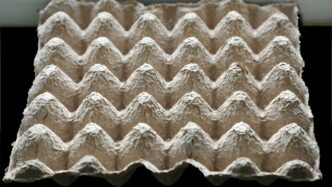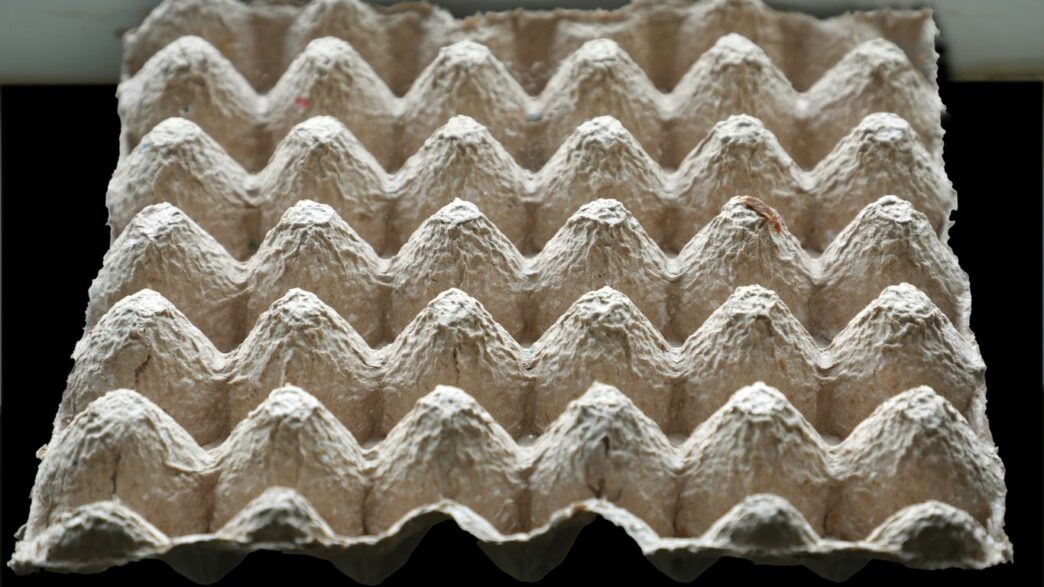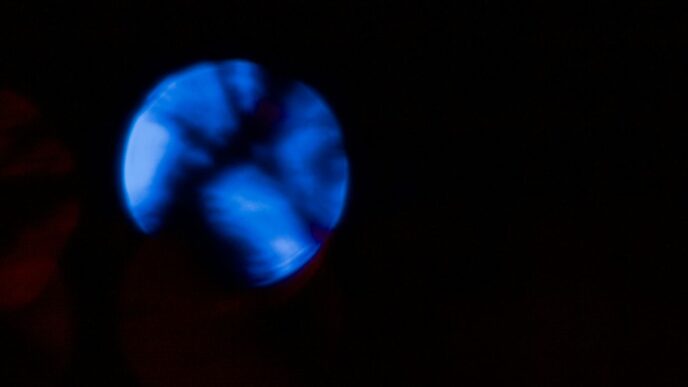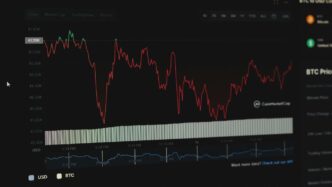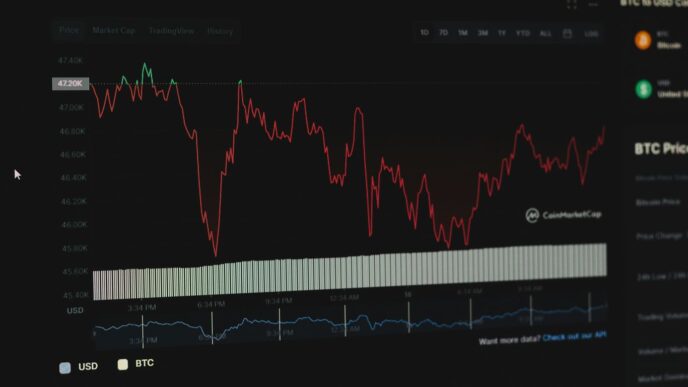MOCVD, or metalorganic chemical vapor deposition, is a technology that’s been around for a while, but it’s still evolving fast. It’s used for making the thin layers that go into all sorts of semiconductor devices, from LEDs to power electronics. As industries look for better performance and more energy-efficient solutions, MOCVD is getting more attention. Companies are investing in new equipment, and there’s a lot of talk about automation, new materials, and how to make the process greener. Even though there are some hurdles, like high costs and tricky safety rules, the future for MOCVD in semiconductor manufacturing looks busy and full of change.
Key Takeaways
- MOCVD is central to making advanced semiconductor materials for things like LEDs, power devices, and solar cells.
- New reactor designs and smarter process controls are helping improve material quality and reduce defects.
- The push for energy-efficient tech, such as electric vehicles and renewable energy, is driving demand for MOCVD systems.
- Automation and integration with AI and IoT are making MOCVD processes faster and more reliable.
- Despite high costs and environmental concerns, ongoing research is making MOCVD more sustainable and widely adopted.
MOCVD Fundamentals and Process Innovations
Core Principles of Metalorganic Chemical Vapor Deposition
Metalorganic Chemical Vapor Deposition (MOCVD) is how a lot of today’s compound semiconductors are made, including the stuff in LEDs, power devices, and solar cells. The magic behind MOCVD is pretty simple: chemicals containing the target metals get mixed with other gases and sent into a special chamber, where they hit a heated wafer. At this point, the chemicals break apart and leave behind a super-thin film that builds up atomic layer by atomic layer.
- MOCVD is known for its ability to control thin film thickness at the atomic level, which is key for making modern electronic and optoelectronic devices.
- The process relies on careful control of temperature, gas flow, and pressure.
- Toxic and sometimes explosive chemicals are sometimes involved, so a lot of the challenge is making it all safe and reliable.
Breakthroughs in Reactor and Process Design
MOCVD reactors and the way processes are run have changed a ton lately. Today, manufacturers are trying to get higher yields, reduce power use, and get even coatings across more and bigger wafers—all while keeping costs down. Here’s a quick look at some of the main advancements:
| Innovation Area | Recent Advances | Impact |
|---|---|---|
| Multi-wafer batch processing | Modern reactors handle several wafers at once | Boosts volume, lowers per-wafer cost |
| Uniformity control | Use of advanced gas flow modeling and real-time sensors | Reduces defects, better batch yield |
| Flexible substrate handling | Chambers redesigned for thinner and bendable materials (like for displays) | Enables new devices, reduces waste |
| Eco-friendly platforms | New systems aim for lower gas and energy use, and cut hazardous emissions | Addresses regulations, lowers cost |
| Predictive maintenance tech | Built-in diagnostics signal when service is needed | Reduces downtime, adds reliability |
And honestly, none of this happened by accident. Stuff like temperature mapping and AI-based controls are becoming more common as chipmakers look for every ounce of efficiency and defect reduction.
Enhanced Doping and Material Uniformity Solutions
Getting the right amount of the right dopant in the right place is something MOCVD struggled with for years. These days, process tweaks and better monitoring have moved things forward. Here’s what’s been making a difference:
- Use of highly precise mass flow controllers for doping agents.
- Optimized temperature zones inside reactos to cut hot and cold spots (which cause non-uniform layers).
- In-situ monitoring—meaning, sensors measure the thickness and chemical makeup as the film is laid down—lets engineers fix problems right away.
A few companies are pushing even further with:
- Real-time feedback loops that adjust conditions as each wafer is grown.
- Multipoint gas injection to keep material uniform across all sections of the wafer.
- Data analytics platforms that track which recipes deliver the most repeatable results across long batches.
If you’ve ever built anything with your hands, you know how small things can throw everything off. Happens with MOCVD, too, but lately the tools to spot and fix those issues are finally catching up.
Critical Role of MOCVD in Semiconductor Applications

The way tech keeps changing, it’s no surprise that MOCVD (Metalorganic Chemical Vapor Deposition) has become a go-to process in the world of semiconductors. It’s not just about making chips; it’s about pushing lighting, power devices, and even solar tech way past what we thought was possible a few years ago. What really sets MOCVD apart is its flexibility and its knack for handling lots of tricky materials with real control. Let’s look closer at where MOCVD is making a big difference:
Manufacturing of High-Performance LEDs
Ever wondered why new LED bulbs are so efficient? MOCVD is the silent hero behind them. The process lets manufacturers layer materials with extreme precision. This is especially important for LEDs, where even a tiny irregularity will mess up brightness or lifespan.
- MOCVD helps create defect-free layers of Gallium Nitride (GaN), which is key for making bright, durable LEDs.
- Wafer carriers used in MOCVD provide the heat uniformity needed for consistent LED performance.
- {
- Reliable layering means less wasted material and far fewer chips end up in the reject pile.
| Parameter | Pre-MOCVD Era | With MOCVD |
|---|---|---|
| LED Efficiency | ~80 lm/W | 120-200 lm/W |
| Chip Yield Rate | <80% | 90%+ |
| Material Uniformity | Inconsistent | Highly uniform |
New semi tech like high-brightness LEDs in cars or giant screens just wouldn’t be happening without MOCVD. If you want a snapshot of broader tech trends, Padmasree Warrior’s perspective mentions how efficient lighting points toward a smarter, more modern world — and MOCVD is part of that.
Fabrication of Power Electronics and Devices
Today’s power electronics — think electric vehicles, 5G stations, and solar inverters — all need semiconductors that can handle big voltages and lots of heat. MOCVD provides a way to deposit tough materials like silicon carbide (SiC) and gallium oxide, each with special electrical properties.
Here’s why MOCVD is such a game-changer for these components:
- It’s the only reliable mainstream method for producing low-defect SiC or GaN, which survive high-voltage stress.
- This means better energy efficiency and longer lifespan in demanding environments (EVs, charging stations, etc.).
- Devices made with MOCVD-grown materials show lower resistance, which boosts performance and cuts power loss.
This also matters for things like wireless charging pads, where trying to make them out of regular silicon would just overheat and fail way too quickly.
Advancements in Photovoltaics and Solar Cells
MOCVD isn’t just about tiny circuits; it’s shaping the future of solar panels too. Making advanced photovoltaic devices out of thin films — especially ones using compounds like indium gallium phosphide — calls for ultra-smooth, pure layers. That’s what MOCVD does best.
Some highlights:
- Solar cells made with MOCVD-grown materials can reach higher efficiencies than older designs.
- Thin film layers allow for flexible panels and new shapes, which opens up new markets (think car rooftops, portable chargers, building facades).
- Multijunction solar cells using MOCVD can convert more sunlight per square inch than basic silicon wafers.
If you’re seeing more solar-powered gadgets or wacky-shaped panels, odds are high that MOCVD is involved.
In Short
Semiconductor manufacturing is changing fast, and MOCVD is right at the center of it. Whether you’re talking about brighter LED screens, sturdier EV power modules, or next-gen solar panels, this technology is doing a lot of heavy lifting. It’s not just a lab trick anymore — it’s powering real products in day-to-day life.
Material Advancements Enabled by MOCVD
MOCVD has made some big changes in the types of materials that can be developed for the semiconductor world. This has been a game changer for the industry, and every year it feels like there’s another breakthrough in what’s actually possible with compound semiconductors. These advancements haven’t happened by accident—equipment improvements and precise control in MOCVD systems are making a real difference (continuous innovation in MOCVD). Let’s get into the material side of things.
Development of Gallium Nitride and Silicon Carbide Films
Gallium nitride (GaN) and silicon carbide (SiC) have become the go-to materials for applications that need high voltages or work in tough environments. MOCVD is especially good for producing thick, high-quality layers of these materials.
- GaN is used in blue/green LEDs, high-power electronics, and even radar systems.
- SiC is common in power conversion, electric vehicles, and next-gen power grids.
- MOCVD helps lower dislocation density, which means better efficiency and reliability—something that’s critical in devices that run hot or for long hours.
Comparison: Properties of Key MOCVD Films
| Property | Gallium Nitride (GaN) | Silicon Carbide (SiC) |
|---|---|---|
| Bandgap (eV) | 3.4 | 3.25 |
| Breakdown Field (MV/cm) | 3.3 | 2.8 |
| Thermal Conductivity (W/cm·K) | 1.3 | 4.9 |
| Typical Uses | LEDs, HEMTs, Lasers | Power, Sensors |
Wide Bandgap Semiconductors for Next-Generation Electronics
Props to MOCVD for making it realistic to work with wide bandgap materials. The higher the bandgap, the more voltage a device can handle without breaking down (literally).
- They’re what let you build smaller, faster, and tougher electronics.
- Better bandgap means higher efficiency for inverters, battery chargers, and 5G base stations.
- Without MOCVD, you’re stuck with older materials and bigger, slower devices.
Industries pushing these materials forward are:
- Power electronics for electric vehicles and renewable energy.
- High-frequency RF devices (for things like 5G and satellite comms).
- Harsh environment systems—think automotive or aerospace sensors.
Thin-Film Innovations in Microelectronics
Being able to control film thickness to the atomic level is another trick MOCVD brings to the table.
- This precision matters for microchips, lasers, and new memory devices.
- More uniform films mean circuits can work at higher speeds with less heat.
- Quantum computing and photonic circuits—emerging fields—depend on the kind of quality these thin films allow.
A few recent trends in thin-film MOCVD:
- Ultra-thin layers for quantum dots and nanowires.
- Custom doping profiles that let designers control conductivity in 3D.
- Specialized stacks for sensors, optoelectronic chips, and next-gen transistors.
MOCVD is setting the pace for what’s new in materials science. It’s the backbone behind many of the devices you use, even if you never see it working behind the scenes.
Emerging Trends in MOCVD Technology
Automation in Semiconductor Production
Automation is really starting to change how semiconductor production works with MOCVD. A lot of companies are shifting toward automated reactors and process controls because it makes things faster and helps keep defects to a minimum. This way, people aren’t as involved in the most repetitive or precise tasks, which means fewer mistakes. Here’s why automation is gaining steam:
- Reactors now use software to monitor and adjust conditions without much human help.
- Production becomes more stable and repeatable.
- Automated data collection helps with quality tracking and troubleshooting if something goes wrong.
This all adds up to higher yields and a smoother workflow. For semiconductor manufacturers under pressure to produce more complex devices, the move to automation is almost a requirement now.
Integration for AI, IoT, and 5G Applications
Today, all sorts of smart technology—including human-like robots and touch-free interfaces—depend on advanced semiconductors. MOCVD is key here, especially for producing chips used in AI, Internet of Things (IoT), and 5G devices. So, what’s happening?
- There’s a boom in sensors, wireless modules, and logic chips.
- New materials are being developed specifically for low-power, high-frequency operation.
- MOCVD is helping make smaller, more efficient device layers possible.
Here’s a quick comparison of how MOCVD supports different smart applications:
| Application | Material Focus | MOCVD Role |
|---|---|---|
| AI Edge Devices | GaN, SiC | Power efficiency, speed |
| IoT Sensors | InGaN, AlGaN | Miniaturization |
| 5G Infrastructure | GaN | High-frequency switching |
The takeaway? Semiconductor makers now count on MOCVD to give them the customization and throughput these new markets demand.
Expansion in Micro-LED Display Manufacturing
If you follow display technology, you’ve probably heard about Micro-LEDs. They’re showing up in high-end TVs, smartwatches, and even AR equipment. MOCVD is front and center here because it’s one of the few ways to grow the fine films and dots needed for these displays. What’s fueling this trend?
- Consumers want thinner screens with better color and efficiency.
- Micro-LEDs last longer and use less energy than older LED types.
- MOCVD reactors are being retooled for mass production of tiny LED chips.
Manufacturers need to deliver huge volumes of consistent devices for Micro-LEDs. MOCVD’s precision is what makes that possible—even as these displays get more complex.
All in all, MOCVD is evolving fast. Automation, integration for new tech sectors, and the micro-LED push are shaping where things go next. There’s no sign of things slowing down, especially as technologies get smarter and manufacturers ask for more specialized chips.
Opportunities and Growth Drivers in the Global MOCVD Market
Metalorganic Chemical Vapor Deposition (MOCVD) systems are in a pretty interesting spot right now. The market is forecasted to jump from around $1.1 billion in 2023 to about $2.8 billion by 2033, which means there are plenty of opportunities and a few obvious growth drivers.
Surge in Demand from Renewable Energy Sector
The push toward renewable energy has definitely increased demand for high-efficiency components like LEDs and solar cells, and MOCVD plays a major role in making these. Here’s why the renewable energy sector is fueling MOCVD’s growth:
- LEDs made with MOCVD are now the standard for many lighting solutions, thanks to their efficiency and long lifespan.
- Photovoltaic cells, used in solar panels, rely on thin films and complex materials produced using MOCVD.
- There’s been a global shift toward lowering carbon footprints, so governments and businesses are investing in green tech, pulling MOCVD along with them.
You can see the numbers matching the trend:
| Sector | 2023 Estimated MOCVD Share | Projected 2033 Share |
|---|---|---|
| Renewable Energy (LEDs, Solar) | 38% | 45% |
| Power Electronics | 31% | 28% |
| Consumer Electronics | 19% | 15% |
| Others | 12% | 12% |
Regional Market Expansion Strategies
The MOCVD market isn’t evenly spread around the world. Asia-Pacific, led by countries like China, South Korea, and Japan, takes the lead thanks to a mix of major local investment and a booming electronics market. Here’s how regions are shaping things:
- Asia-Pacific: Big spending, local manufacturing, and a ton of consumer demand drive steady growth.
- North America: Strong R&D, but the market size is smaller compared to Asia.
- Europe: Focused more on energy efficiency and green construction, so LED and solar cell applications are growing.
Governments in places like China and Japan are offering incentives and funding for advanced manufacturing projects, making these areas even more attractive for semiconductor investment.
Investment Trends and Infrastructure Growth
Companies and governments are pouring money into MOCVD improvements. Here’s what to expect:
- Big investments in next-generation reactors and faster, automated systems.
- Infrastructure upgrades to support advanced semiconductor manufacturing (especially for new materials like GaN and SiC).
- More partnerships between technology providers, equipment makers, and end-users to push innovation.
Recent industry moves, like new MOCVD system launches, expanded precursor production, and bulk equipment orders from major semiconductor manufacturers, show that the market’s getting more competitive—and more innovative. The trend toward high-efficiency devices and smarter factories means investment is likely to keep rising.
In summary, opportunities for the MOCVD industry are closely tied to energy trends, regional policy changes, and ongoing investment in smarter, faster, more capable manufacturing environments. These factors set the stage for steady market growth over the next decade.
Challenges and Barriers to MOCVD Adoption
High Capital and Operational Costs
MOCVD equipment doesn’t come cheap. About 59% of small and mid-size semiconductor firms point to high upfront costs as their biggest hurdle. It’s not just buying the system itself—installation and getting the right infrastructure in place can eat up almost 41% of your entire budget. Here’s a quick breakdown:
| Cost Category | Share of Total Expense (%) |
|---|---|
| Equipment Purchase | 59 |
| Installation/Infrastructure | 41 |
| Maintenance & Upgrades | 36 |
Ongoing maintenance drives up expenses, too, since these machines need regular, skilled care. Most companies also find that upgrading systems is slow because some crucial parts can have long wait times. This whole process puts serious pressure on everyone’s bottom line.
Complexities in Scalability and Integration
Expanding MOCVD beyond small research setups to full-scale industrial production is a beast of a challenge. A few sticking points show up again and again:
- Tough calibration and control steps, often demanding rare technical expertise.
- Delays in equipment upgrades—just finding replacement parts can take weeks.
- Integrating MOCVD with other chip-making steps means sorting out compatibility issues, like making sure heat and chemicals won’t mess things up.
Over half the companies using MOCVD report trouble finding the right engineers. In regions where chip manufacturing is growing, this skill gap is even sharper.
A lot of the technical roadblocks are discussed from both theoretical and practical points of view in this fabrication methods and scaling challenges overview.
Environmental and Safety Considerations
Running MOCVD means dealing with a lot of hazardous chemicals at high temperatures, and you really can’t cut corners here. Regulatory rules on handling toxic gases, safe disposal, and limiting emissions have only gotten stricter. Compliance cost adds another 5-7% to the price of running a system.
Steps firms regularly take to protect people and the planet include:
- Installing scrubbing systems to catch volatile organic compounds (VOCs) before they reach the air.
- Creating dedicated spaces for toxic chemical storage and handling.
- Training all operators in safety protocols, often above-and-beyond legal minimums.
Growing global pressure on green manufacturing means these costs (and the effort involved) will likely rise.
Bottom line: MOCVD’s promise is clear, but persistent challenges around cost, scalability, labor, and environment hold back broader adoption. Firms willing to invest in innovation and training have a better shot, but it’s no small feat to get there.
Sustainability and Environmental Impact of MOCVD

When you think about how semiconductors are made, MOCVD (Metalorganic Chemical Vapor Deposition) is one process that stands out, but it doesn’t always come with a clean environmental record. MOCVD processes often use hazardous gases and produce waste that requires careful management. Lately, though, manufacturers and researchers are pushing for greener ways to run these setups without slowing down chip production or raising costs too much.
Strategies for Reducing VOC Emissions
Reducing volatile organic compound (VOC) emissions is a huge part of making MOCVD more sustainable. VOCs are generated from chemical precursors used during deposition. Here are a few popular ways facilities are cutting down these emissions:
- Switching to less volatile, more stable source materials whenever possible
- Upgrading abatement systems to destroy or capture VOCs more effectively
- Recycling unused precursor material and exhaust stream cleaning
- Optimizing the MOCVD vacuum system to minimize gas leaks and unneeded exposure
This push for lower emissions isn’t just a good look—it’s also about meeting regulations and lowering waste disposal costs.
Advancements Toward Eco-Friendly Processes
There’s been real progress in making the actual MOCVD process itself greener. Innovations have hit both equipment design and operation. Some companies are now:
- Using closed-loop gas delivery and recycling systems
- Running reactors at lower temps to use less energy
- Experimenting with alternative precursors that have a lighter environmental footprint
Here’s a quick look at how some of these advancements break down:
| Innovation | Typical Impact |
|---|---|
| Closed-loop gas recycling | 10–25% less waste gas |
| Low-temp deposition | Up to 15% energy saved |
| Eco-friendly chemical alternatives | Reduced toxicity |
It’s not perfect, but it’s moving in the right direction, and more R&D is expected in the next few years.
Regulatory Drivers and Compliance Measures
With stricter environmental regulations rolling out all over the world, MOCVD tool owners have no choice but to keep up. Compliance usually revolves around emission caps, chemical use tracking, and waste disposal practices. Some common requirements are:
- Installing continuous emission monitoring systems
- Documenting all chemical usage, storage, and final waste handling
- Completing yearly audits and sustainability reports
Even though compliance can bump up system costs by 5–7%, it also encourages ongoing improvement. New rules often motivate companies to invest in better tools, which benefits both the planet and their bottom line over time.
In summary, sustainability and environmental impact aren’t afterthoughts for MOCVD anymore—they’re baked into every conversation about new reactors, processes, and business decisions.
Conclusion
So, that’s the story with MOCVD in the world of semiconductors. It’s not the flashiest topic, but it’s pretty important if you care about things like faster phones, better solar panels, or those super-bright LEDs. The tech keeps getting better, even though it’s not always easy—costs are high, and the process can get complicated. Still, with more industries needing efficient chips and new materials, MOCVD isn’t going anywhere. In fact, it’s likely to become even more common as companies push for smarter, greener, and more powerful electronics. Asia’s leading the charge, but really, the whole world is getting in on the action. As long as we keep wanting better gadgets and cleaner energy, MOCVD will keep playing a big part behind the scenes.
Frequently Asked Questions
What is MOCVD and why is it important in making semiconductors?
MOCVD stands for Metalorganic Chemical Vapor Deposition. It is a special way to make very thin layers of materials, which are used to build semiconductors. These semiconductors are the building blocks for things like computers, phones, and LED lights. MOCVD is important because it helps make these materials very pure and precise, which is needed for high-quality electronics.
How does MOCVD help in making LED lights and solar cells?
MOCVD is used to create the thin layers that make LED lights shine brightly and last a long time. For solar cells, MOCVD helps make the layers that turn sunlight into electricity. This process makes both LEDs and solar panels more efficient and reliable.
What are the main challenges with using MOCVD technology?
Some big challenges with MOCVD include the high cost of the equipment and the need for very careful control of the process. It also uses special chemicals that must be handled safely. Making the process work well on a large scale can be tricky, and there are strict rules to protect the environment.
How is MOCVD becoming more eco-friendly?
Companies are working to make MOCVD better for the environment by reducing harmful gas emissions, recycling materials, and using safer chemicals. New rules and technology improvements are helping to make the process cleaner and safer for people and nature.
Where is MOCVD technology growing the fastest?
MOCVD is growing quickly in Asia, especially in countries like China, South Korea, and Taiwan. This is because these countries have many factories that make semiconductors and electronics. Other places like North America and Europe are also seeing growth, but Asia leads the way.
What does the future look like for MOCVD in electronics?
The future looks bright for MOCVD because more people want better electronics, cleaner energy, and smart devices. As technology gets better, MOCVD will be used to make new types of semiconductors for things like electric cars, 5G phones, and advanced computers. More automation and new materials will also help MOCVD become even more important.

